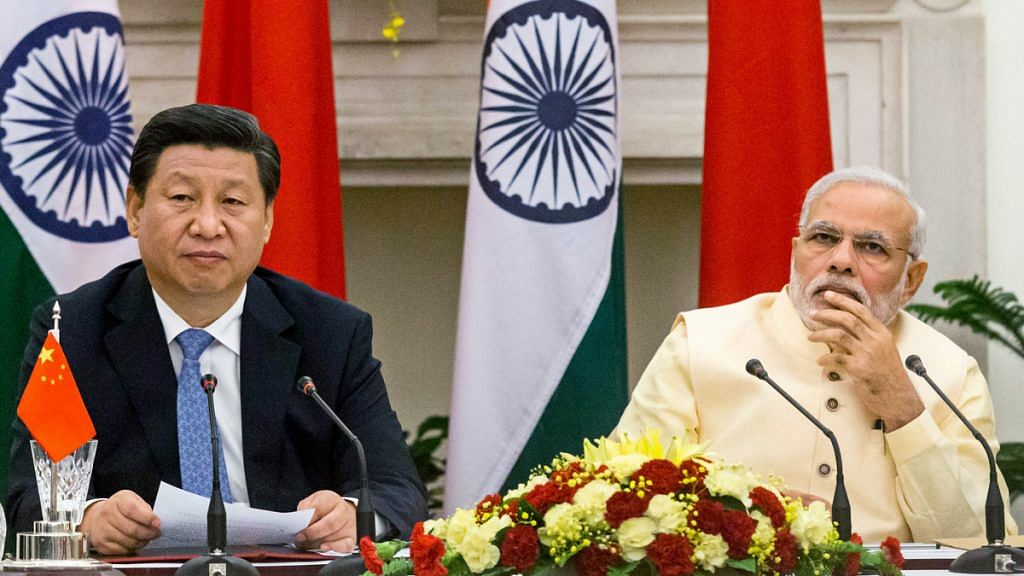If Prime Minister Narendra Modi’s trip to China last year to meet President Xi Jinping in Wuhan arrested the growing rift in bilateral relations after the Doklam crisis, the respite has been limited and temporary. While the two leaders have successfully managed to avoid another flare-up along the Himalayan frontiers, neither Beijing nor New Delhi has been able to halt the growing divergences that characterise many aspects of the broader relationship.
The informal meeting between Xi Jinping and Modi in Mamallapuram, Tamil Nadu has been announced, planned and scheduled — all informally, of course — but it is still not clear whether it will take place at all. The confirmation is yet to come. It is also not clear which side threw in the showstopper.
But the mere fact that the meeting between two heads of government is still hanging in the air so close to its scheduled date already tells us more about the state of India-China relations than what any official communique can or could have.
Also read: After Kashmir, Modi and Xi could struggle to recreate ‘Wuhan spirit’ in Mamallapuram
Little for Xi to take home
Even if Xi turns up in Mamallapuram this weekend, other than the sublime temples and media spectacle, he will have little to take back with him.
President Xi has failed to enlist India in his favourite and most ambitious enterprises: New Delhi steadfastly remains outside the Belt and Road Initiative, is likely to limit the role of Chinese telecom equipment manufacturers in its 5G network rollout, and is the leading holdout in a big regional free trade arrangement. External Affairs Minister S. Jaishankar put it as succinctly as possible in a media briefing marking the 100 days of the second Modi government last month: “BRI rethink, the answer is no.” He reiterated this at last week’s World Economic Forum event in New Delhi.
Similarly, even if the US government weren’t pressing New Delhi to keep Huawei out of its 5G network rollout, influential voices within the country’s own security and political establishment have been vocal about avoiding building a pervasive network using equipment manufactured by an opaque country with a history of offensive cyber operations and whose adversarial posture is increasingly open for all to see.
India remains on the fence on the Regional Comprehensive Economic Partnership, a proposed free trade agreement that includes most of the Indo-Pacific economies. One of the biggest reasons for this is the concern that such an agreement will allow Chinese manufacturers greater access to the Indian market while Indian manufacturers and services exporters will continue to face hurdles selling to China. As I’ve argued elsewhere, China’s information control and internet censorship regime is effectively a non-tariff barrier.
Also read: As Chennai readies for Modi-Xi meet, ancient Chinese links to Tamil Nadu surface
Him Vijay, raising the red flag
If the prospects for even modest success on his desired agenda are dim, Xi Jinping is scheduled to arrive in India at a time when the Indian Army is taking its new mountain combat capability through the paces in Arunachal Pradesh. Of course, the exercise “Him Vijay” is taking place 100 km from the Chinese boundary, but it’s pretty obvious that the Red Team in this exercise is the Chinese People’s Liberation Army (PLA). In any case, Arunachal Pradesh is a red rag to our red neighbour.
Little wonder that the Chinese side raised this issue during a preparatory meeting last week.
Returning past favours during visits
I do not know if New Delhi did it intentionally, but it is a good idea to raise Xi’s costs of participating in the informal summit. If Xi comes to Mamallapuram despite the small picking and some provocation, he will send a “costly signal” of the value China attaches to its relations with India. Such a signal is the necessary condition for New Delhi to be more accommodating of Beijing’s positions in political and trade negotiations. If he does not come, then it follows that New Delhi should maintain hardline positions, and that China’s indulgence of Pakistan and its recent diplomatic activities over Kashmir are the primary indicators of its India policy.
As for military activities during official visits, China should be the last to complain. In 1992, Beijing tested a megaton nuclear weapon when then-President R. Venkataraman was on the first ever visit by an Indian president to China. In 2007, China conducted an anti-satellite (ASAT) test when its foreign minister Li Zhaoxing was on an official visit to India. More recently, in 2014, the PLA carried out incursions in Chumar and Demchok even as Xi was swinging with Modi in a jhoola in Ahmedabad. If China claims its pattern of effrontery during high-level visits is innocent, then well, so is the Indian Army’s exercise, Him Vijay.
It is in India’s interests to have stable, amicable and mutually prosperous relations with China — yet, they cannot be achieved for the asking. Cooperation has to evolve. The Mamallapuram summit is a good indicator of how well we are doing on that front, whether it happens or not.
The author is the director of the Takshashila Institution, an independent centre for research and education in public policy. Views are personal.
